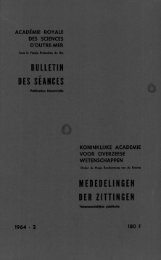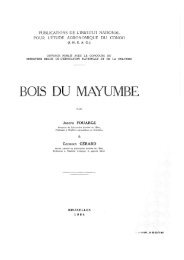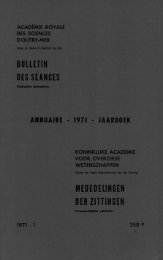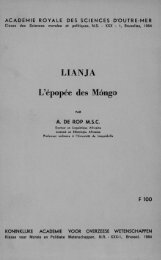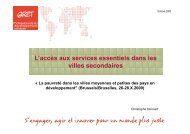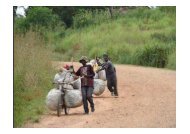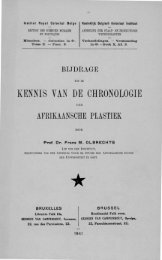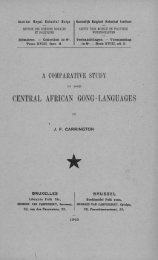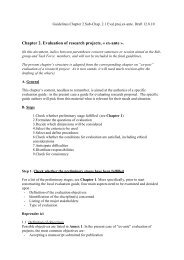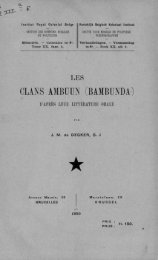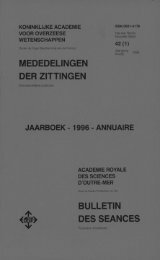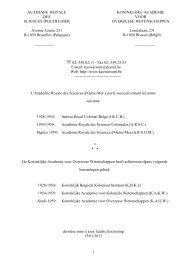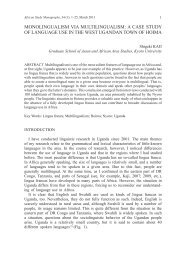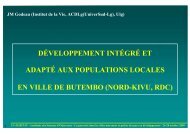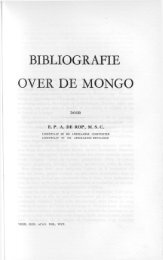(1973) n°3 - Royal Academy for Overseas Sciences
(1973) n°3 - Royal Academy for Overseas Sciences
(1973) n°3 - Royal Academy for Overseas Sciences
You also want an ePaper? Increase the reach of your titles
YUMPU automatically turns print PDFs into web optimized ePapers that Google loves.
— 514 —<br />
fed, but only three became infected. As a donor, I was practically<br />
useless, so 7 mis of my blood were inoculated into Dr.<br />
L a in s o n and I received curative treatment. This attempt to<br />
obtain infection was little better and L a in s o n ’s blood was<br />
passed to Dr. B r a y , another member of my department, with<br />
equally poor results. My Egyptian student Dr. A w a d followed<br />
in succession but he also producted no suitable gametocytes.<br />
W e had now nearly exhausted the supply of volunteers when<br />
the Scottish biochemist Dr. James W il l ia m s o n at last developed<br />
an excellent gametocytaemia after the parasite had been<br />
passed through mosquitoes. Mosquitoes were fed on him and<br />
77 % became well infected. Sporozoites appeared in the salivary<br />
glands and nearly a thousand infected mosquitoes were allowed<br />
to bite William C o o p e r , my chief technician, who had<br />
volunteered <strong>for</strong> the final experiment involving the liver biopsy.<br />
The timing of the biopsy had to be carefully judged and we<br />
decided that 9 days should represent the maturation period. The<br />
operation was per<strong>for</strong>med satisfactorily, sections were cut and<br />
beautiful, most characteristic exoerythrocytic schizonts were demonstrated<br />
( G a r n h a m et al. 1955). C o o p e r was of course<br />
still in hospital, and actually had a hypostatic pneumonia. He<br />
insisted on having a microscope brought to his bed and examined<br />
the material. A little later, he painted a remarkable series<br />
of pictures of the schizonts in his own liver.<br />
The problem of P. malariae remained unsolved. I had shown<br />
in 1951 that the quartan parasite (P. inut) of Asian macaques<br />
had a prepatent period lasting 12 days. By this time Bray by<br />
substituting chimpanzees <strong>for</strong> men, had succeeded in I960 in finding<br />
the early stages o f P. malariae in their livers. He had taken<br />
my figure of 12 days as the guide line <strong>for</strong> his experiments —<br />
another misleading clue.<br />
It seemed important to complete the study of the life cycle<br />
of P. malariae in its later stages in the liver, and when Romanian<br />
workers described a Moldavian strain (VS) of the quartan<br />
parasite, which gave rise to heavy infections in mosquitoes,<br />
we at once realised that here was our opportunity. W e planned<br />
accordingly with P.C. Sh u t e (our collaborator in the P. vivax<br />
and P. falciparum work) that he should go to Bucarest and<br />
infect large batches of mosquitoes on patients who had been



